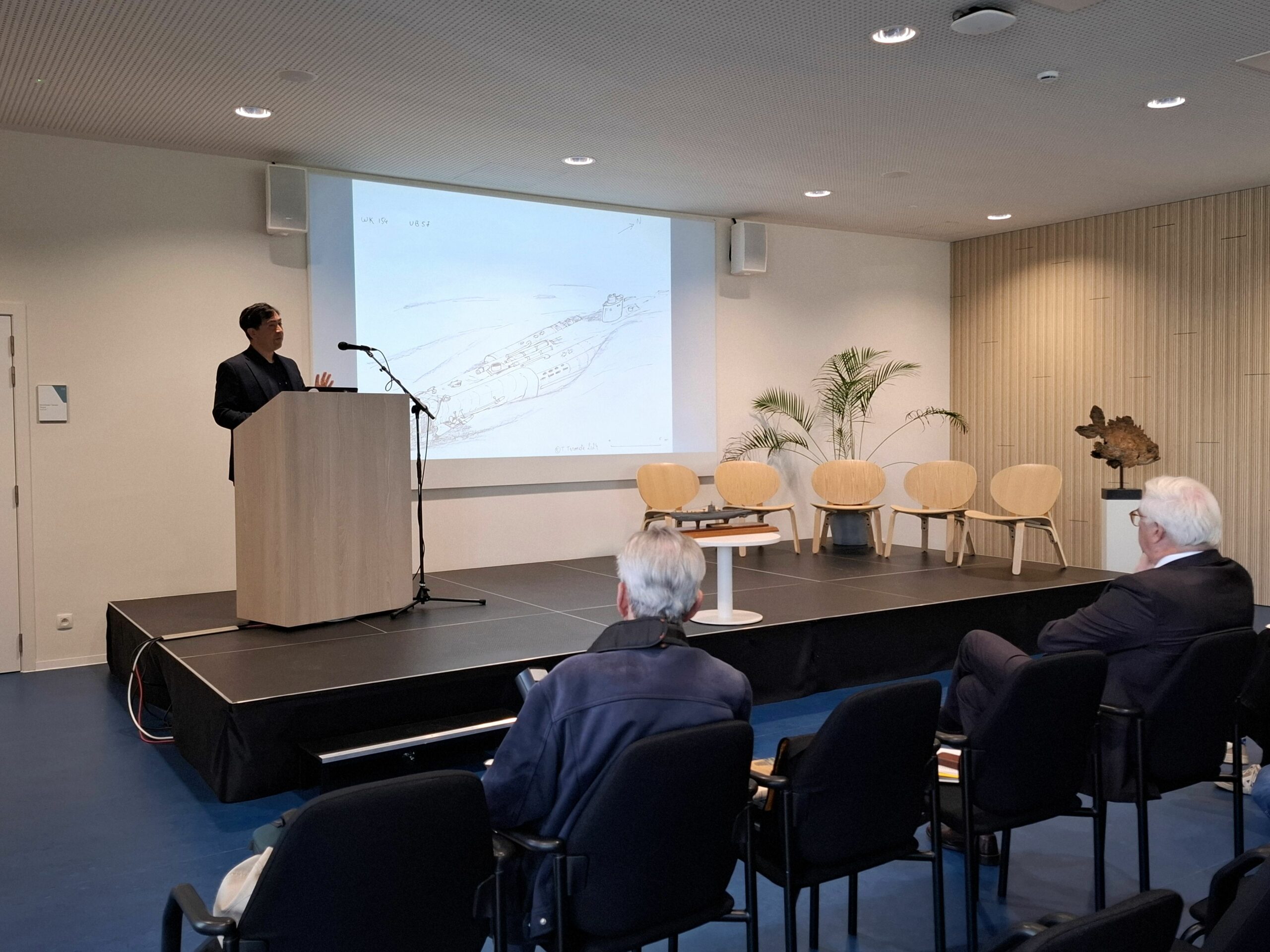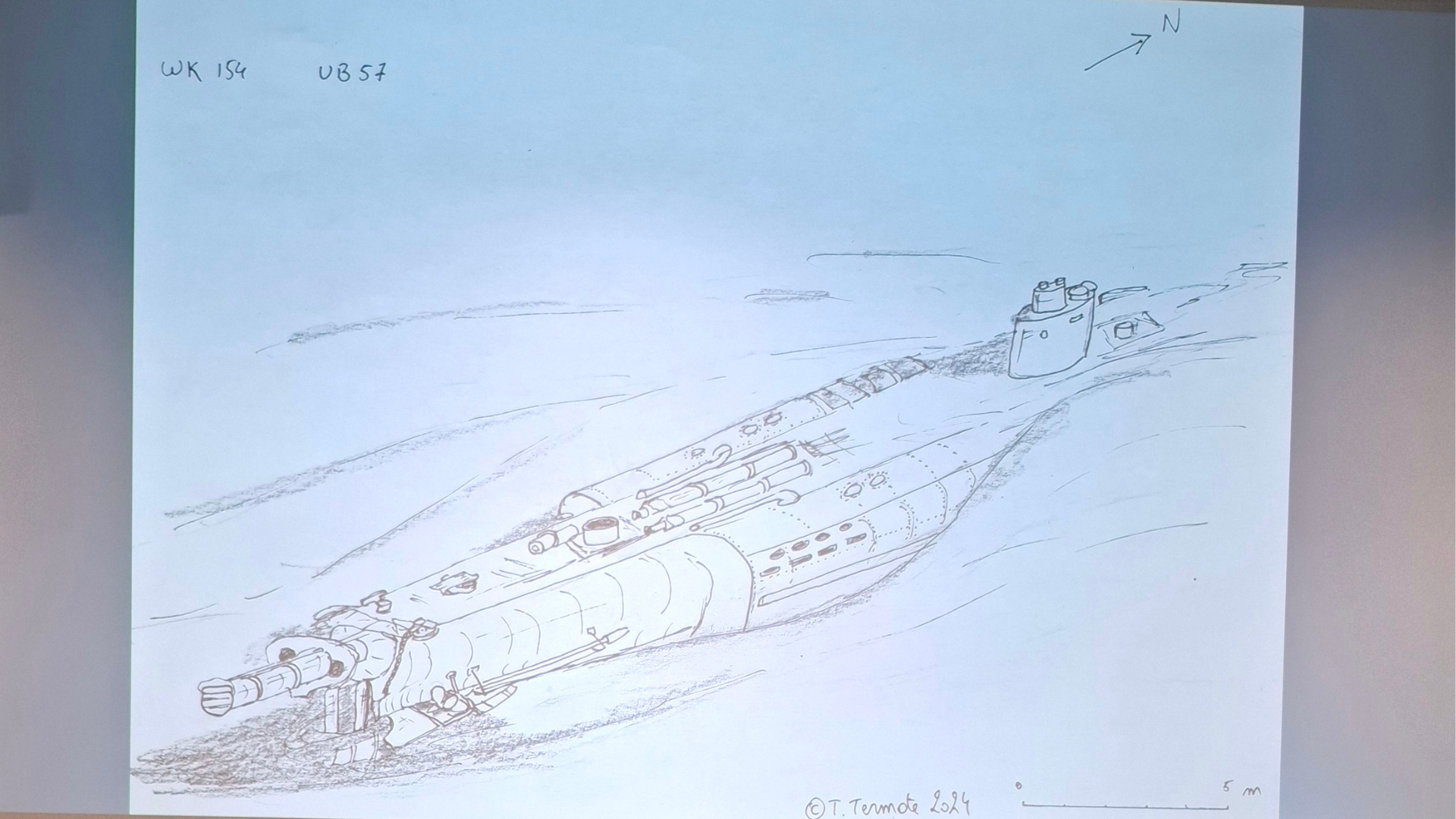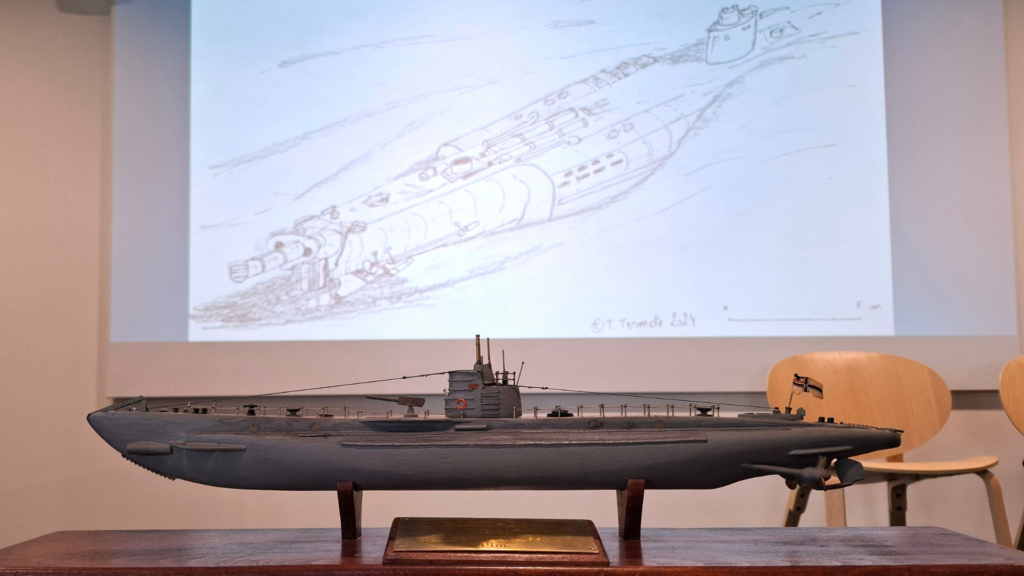The last German First World War submarine in Belgian waters has been found and identified. The wreck, which sank some 49 ships during the war, is remarkably well preserved.
There are numerous shipwrecks in the Belgian part of the North Sea, in particular due to wars from the 20th century, according to maritime archaeologist Tomas Termote. "The strategic location of Ostend and Zeebrugge was crucial in Germany's battle against Great Britain. Belgium has 11 wrecks of German submarines from the First World War," he said.
In recent years, all but one of the wrecks had been identified, until now. "It was quite a job because we could only identify the wreck with 100% certainty via the inscriptions on the propellers, but the wreck is almost completely buried in a sandbank. Only the tower and part of the cannon are visible, and the propellers are 4-5 metres under the sand," said Termote.
With the help of the dredging company DEME, a well was carefully dug to make the propellers visible. It turned out to be submarine UB-57, carrying the bodies of 29 people.

Maritime Archaeologist and Historian Tomas Termote at a Press event. Credit: Belga/Linde Walters
The UB-57 was a notorious submarine, 55 metres long and heavily armed. On 3 August 1918, the UB-57 set out on its last patrol. At 22:15 on 14 August, it sent a radio signal to let others know that they were on their way back and had sunk three ships. After that, the boat disappeared from the radar.
A week later, the bodies of five crew members washed ashore. "The boat most likely sank because of a mine," says Termote. "The England-France-Belgium triangle was very dangerous for boats because of the minefields."
The wreck is in remarkably good condition. "In my 35 years of diving experience, I can say that we have one of the best preserved submarine wrecks here," says Termote.

Close-up image of UB-57 sketch. Credit: Belga/Linde Walters
"This identification solves the mystery of the last unidentified German U-boat from the First World War in Belgian waters. Now we can say that our mission, after 40 years, is accomplished," Termote added.
The governor of West Flanders, Carl Decaluwé, emphasised the significance of the discovery. "Underwater cultural heritage is just as important as heritage on land. It is part of history."
The wreck is automatically protected heritage because it is over 100 years old. In consultation with Germany, organising a memorial for the 29 crew members is being considered.

